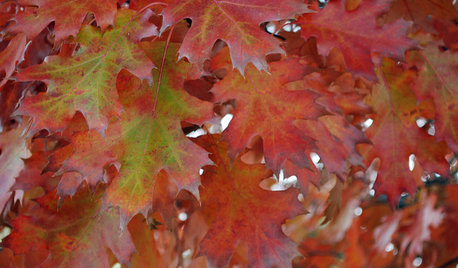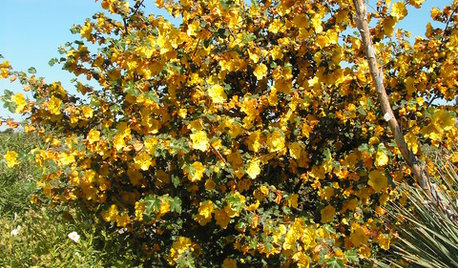Black fungus on rose bush leaves, help!
txrose
16 years ago
Related Stories

FALL GARDENING5 Ways to Put Fall Leaves to Work in Your Garden
Improve your soil and yard the organic way with a valuable garden booster that grows on trees
Full Story
PETS6 Ways to Help Your Dog and Landscape Play Nicely Together
Keep your prized plantings intact and your dog happy too, with this wisdom from an expert gardener and dog guardian
Full Story
FLOWERS AND PLANTSHelp Monarchs and Other Butterflies by Planting Common Milkweed
Summer-blooming Asclepias syriaca is an important larval host plant for the monarch butterfly and attracts a number of pollinating insects
Full Story
GARDENING GUIDESWhat's Wrong With My Plant? Leaves Often Hold the Clues
Learn how to identify common plant ailments by reading their leaves
Full Story
GARDENING GUIDES6 Healthy Ways to Handle Fallen Leaves
Once nature's beautiful bounty is spent, these ecofriendly strategies for leaves will put your yard in the clear
Full Story
PLANTING IDEASGreat Garden Combo: Rose + Clematis for Small-Space Impact
We all need somebody to lean on. And when a rose supports a climbing vine, the results can totally transform a small garden
Full Story
WINTER GARDENINGPruning Secrets for Exquisite Roses
Encourage gorgeous blooms year after year with this time-tested advice on how to prune your rosebush in winter for health and shape
Full Story
GARDENING GUIDESWhat Kind of Roses Should You Grow?
Want to add the beauty of roses to your garden? Find out which ones, from old-fashioned to modern, are right for you
Full Story
GARDENING GUIDES6 Plants That Beat Butterfly Bush for the Wildlife Draw
It's invasive, a nonnative and a poor insect magnet. Check out these better alternatives to butterfly bush in the garden
Full Story
GARDENING GUIDESGreat Native Plant: California Flannel Bush
Forget watering once this bush is established. But the yellow burst in spring and summer, you'll remember
Full Story





rhizo_1 (North AL) zone 7
ltcollins1949
Related Professionals
Accokeek Landscape Architects & Landscape Designers · Port Royal Landscape Architects & Landscape Designers · Cockeysville Landscape Contractors · Fort Mill Landscape Contractors · Lehigh Acres Landscape Contractors · Peoria Landscape Contractors · Snoqualmie Landscape Contractors · Wailuku Landscape Contractors · Hawaiian Gardens Landscape Contractors · Fort Myers Window Contractors · Riverside Window Contractors · Coral Gables Window Contractors · Los Angeles Window Contractors · Vista Park Window Contractors · Woodland Hills Window Contractorssylviatexas1
gardengal48 (PNW Z8/9)
meldy_nva
lindac
vetivert8
MSBANKHEAD